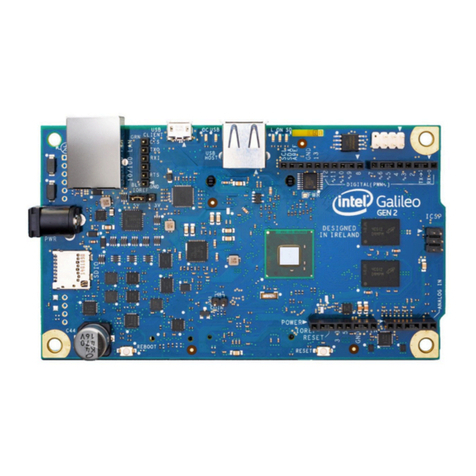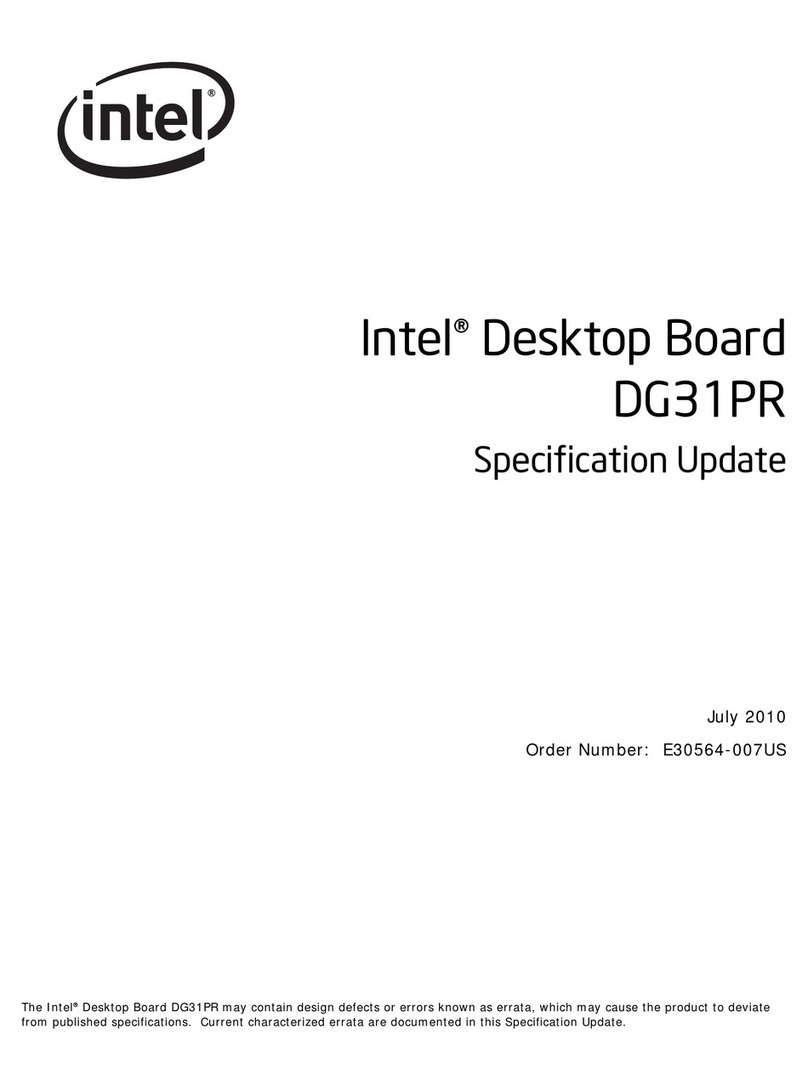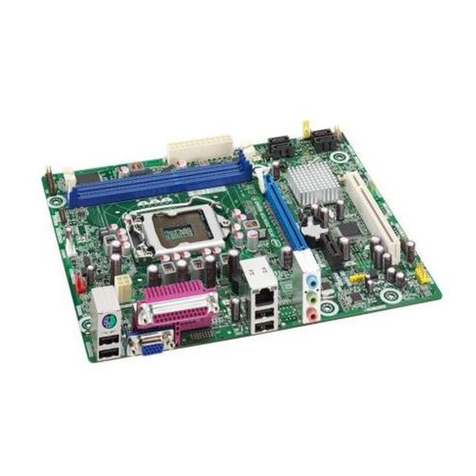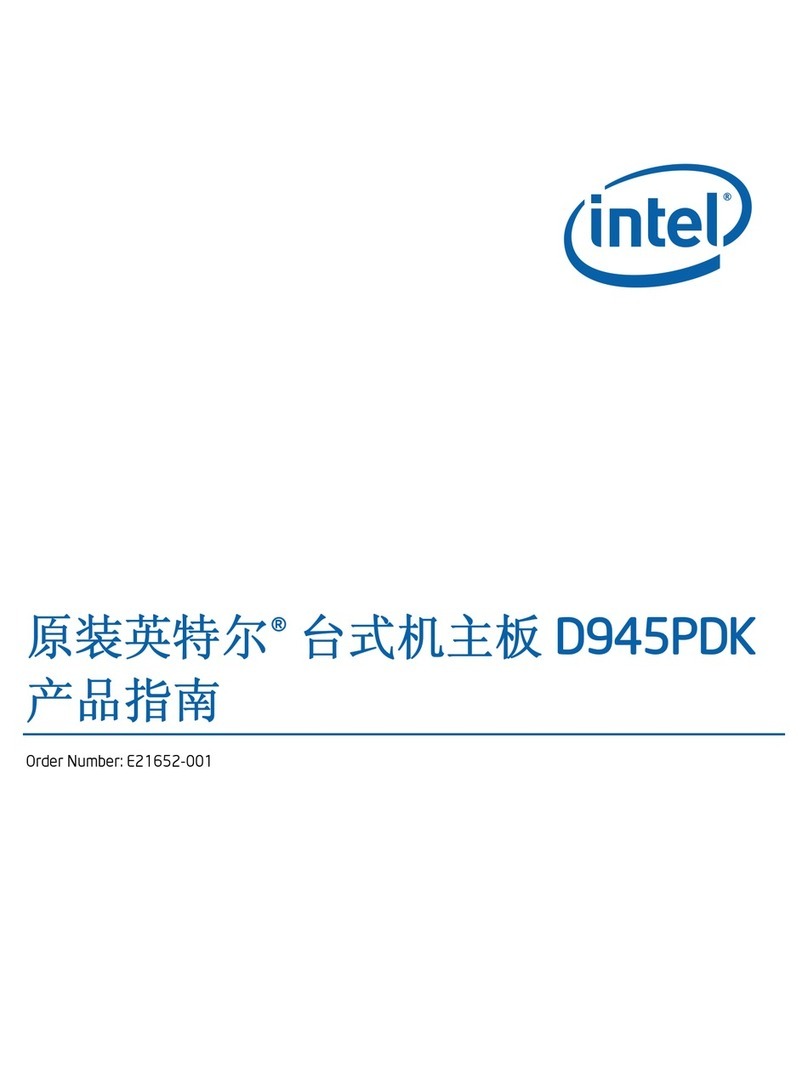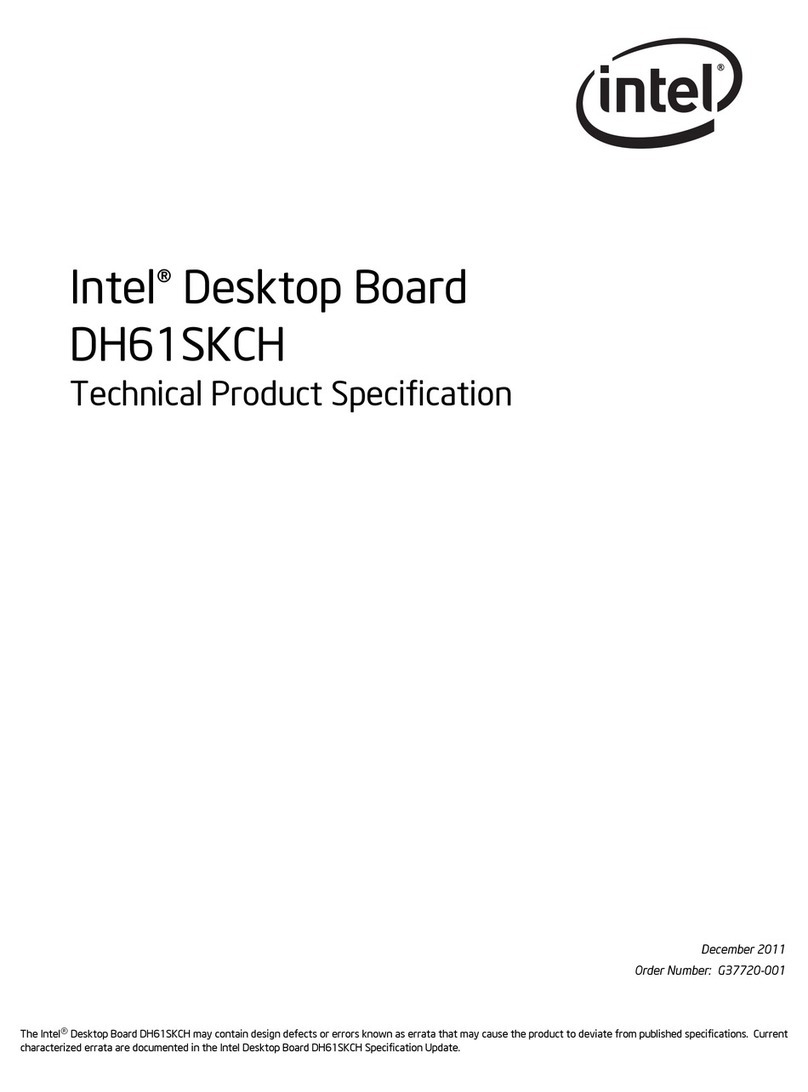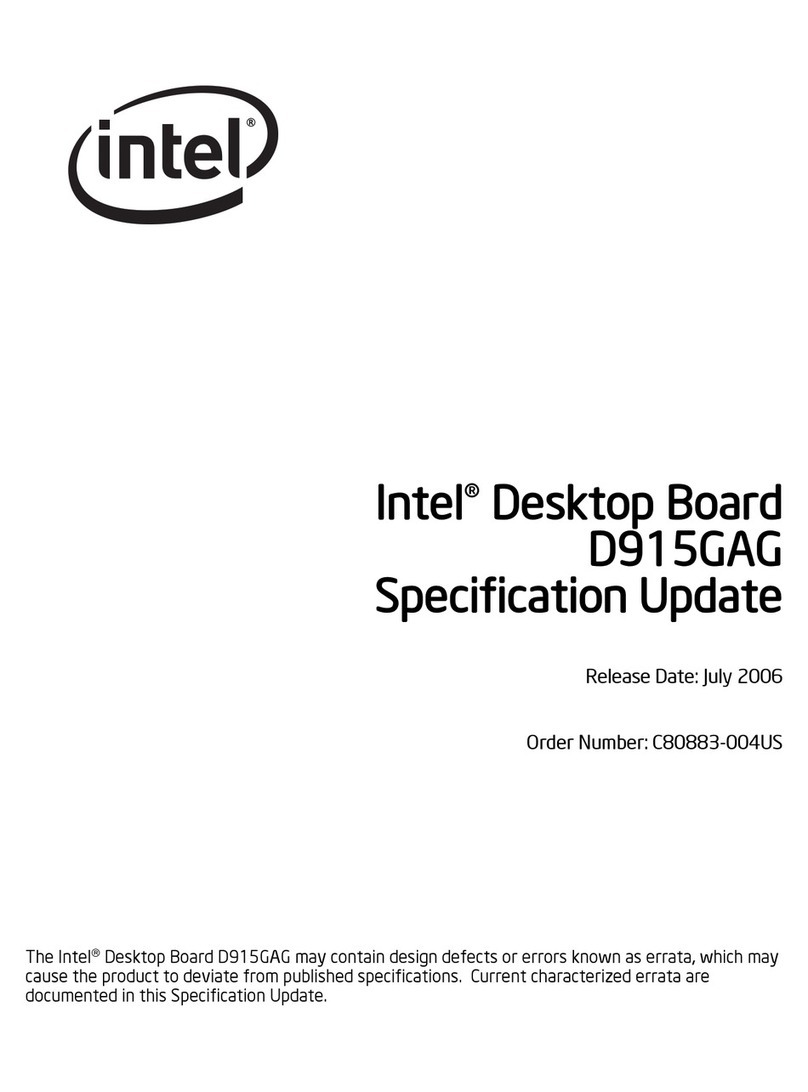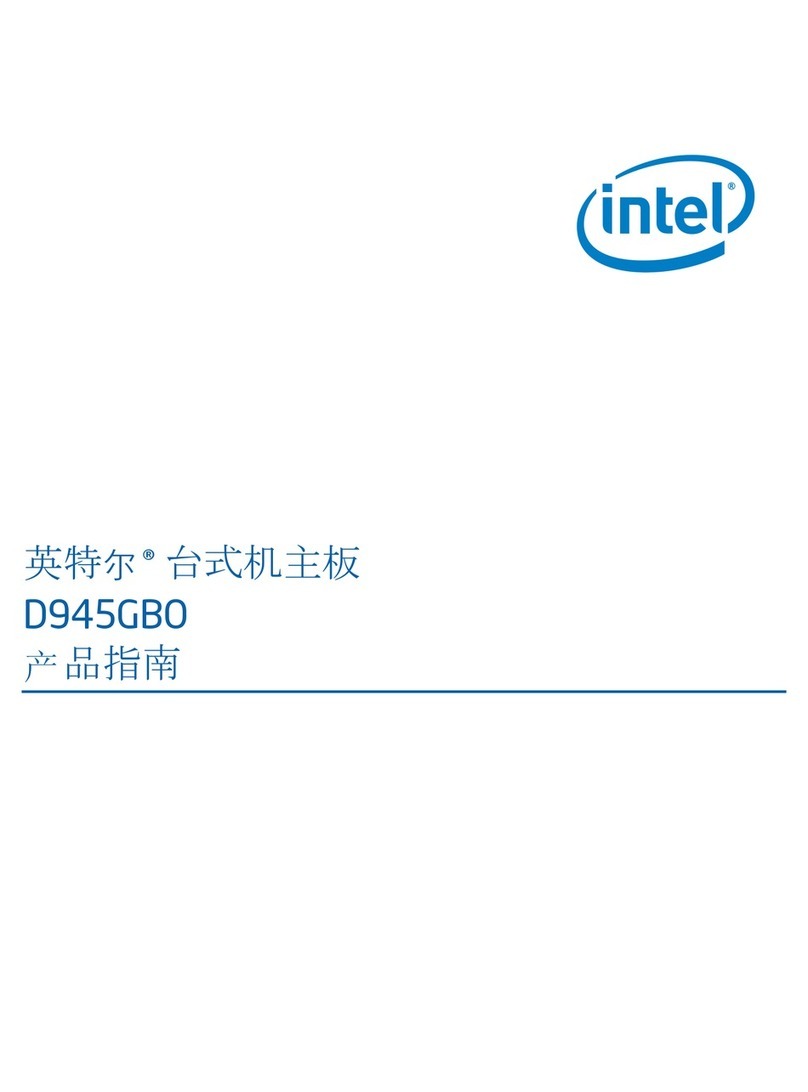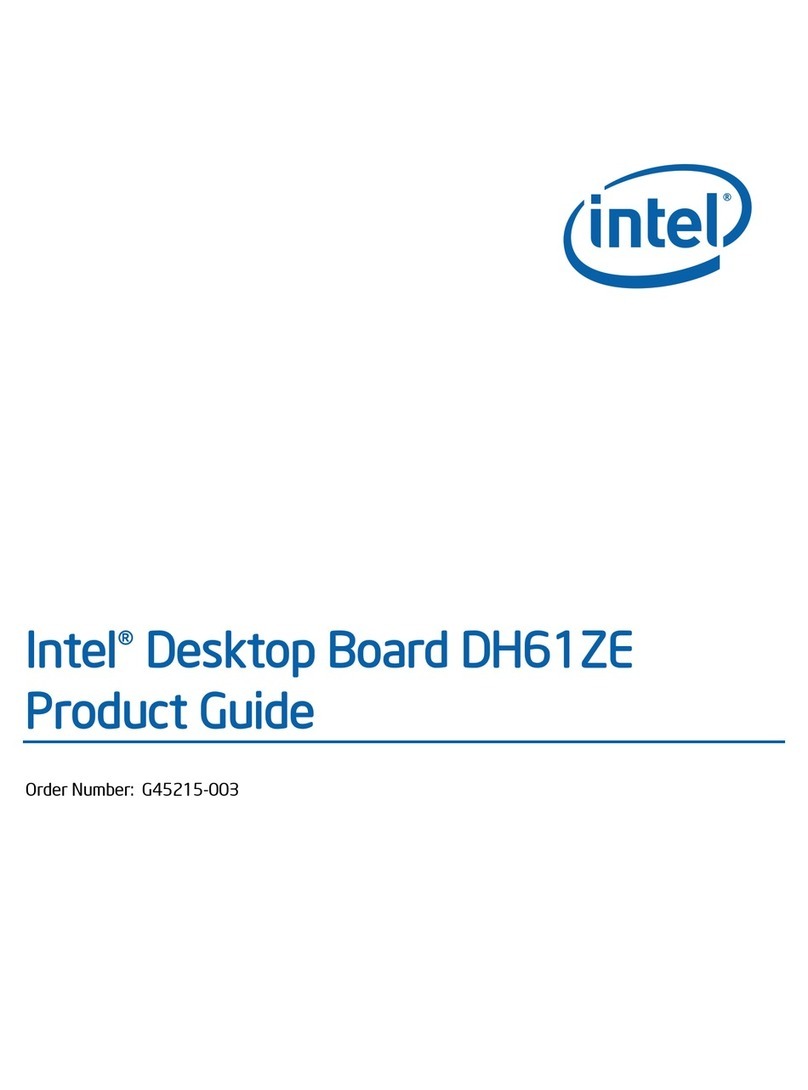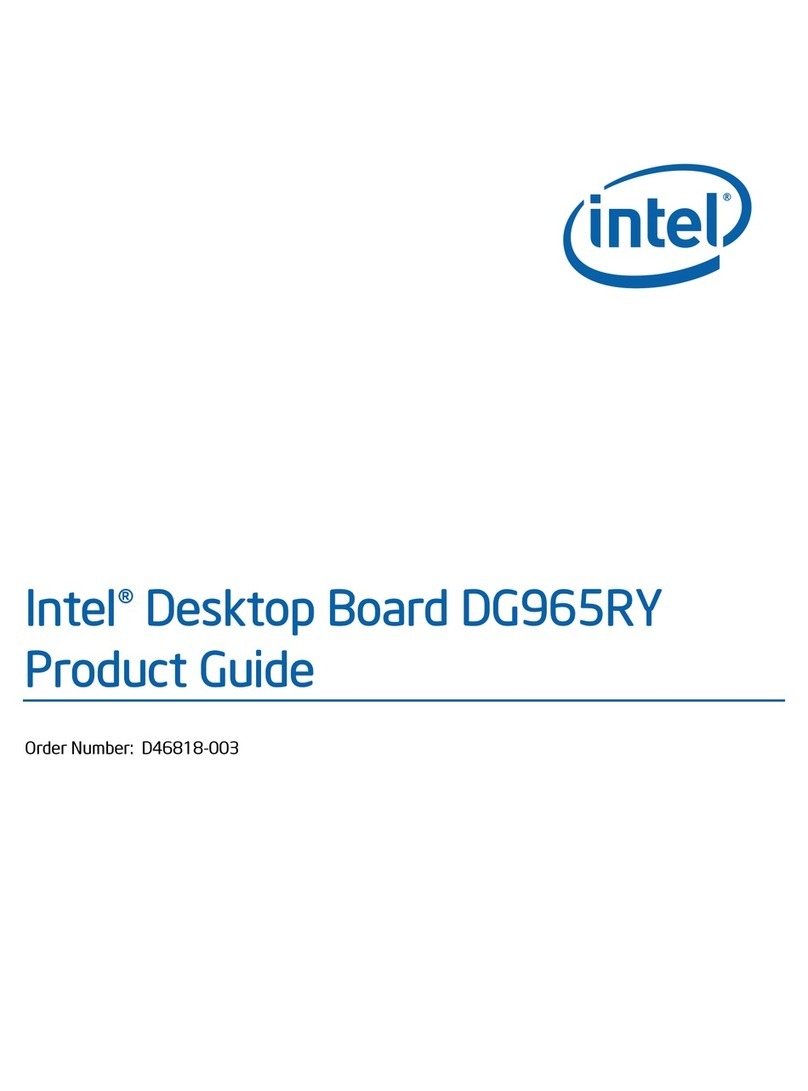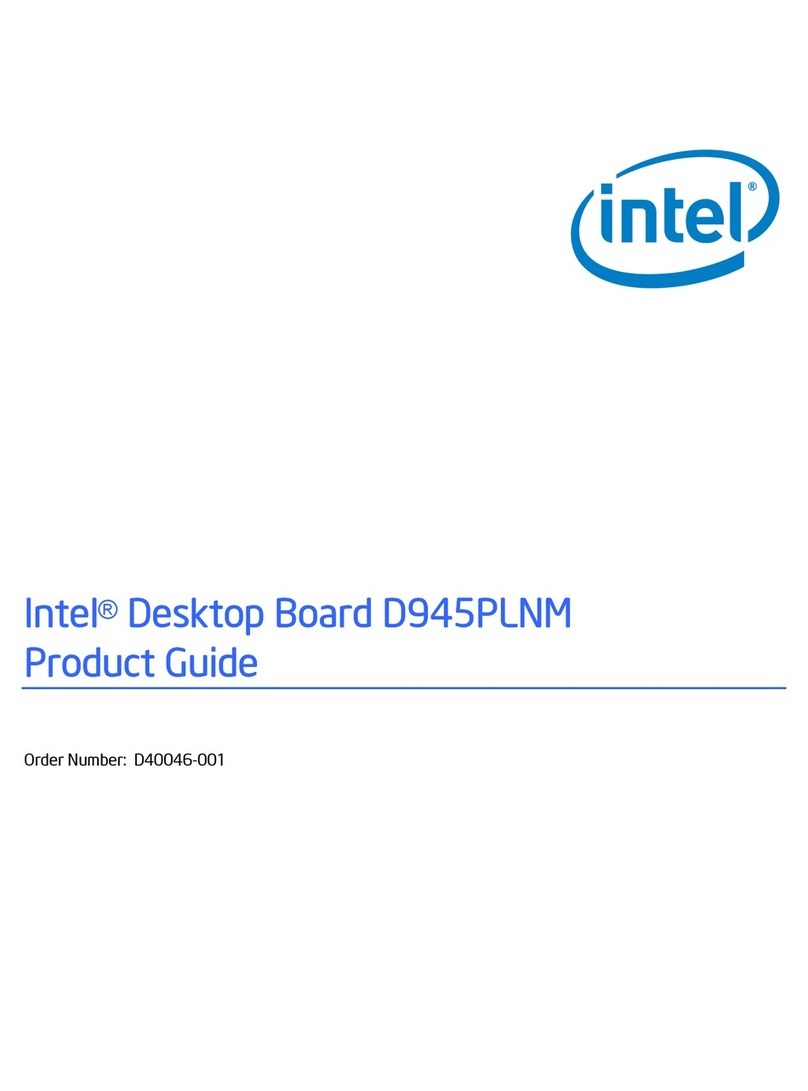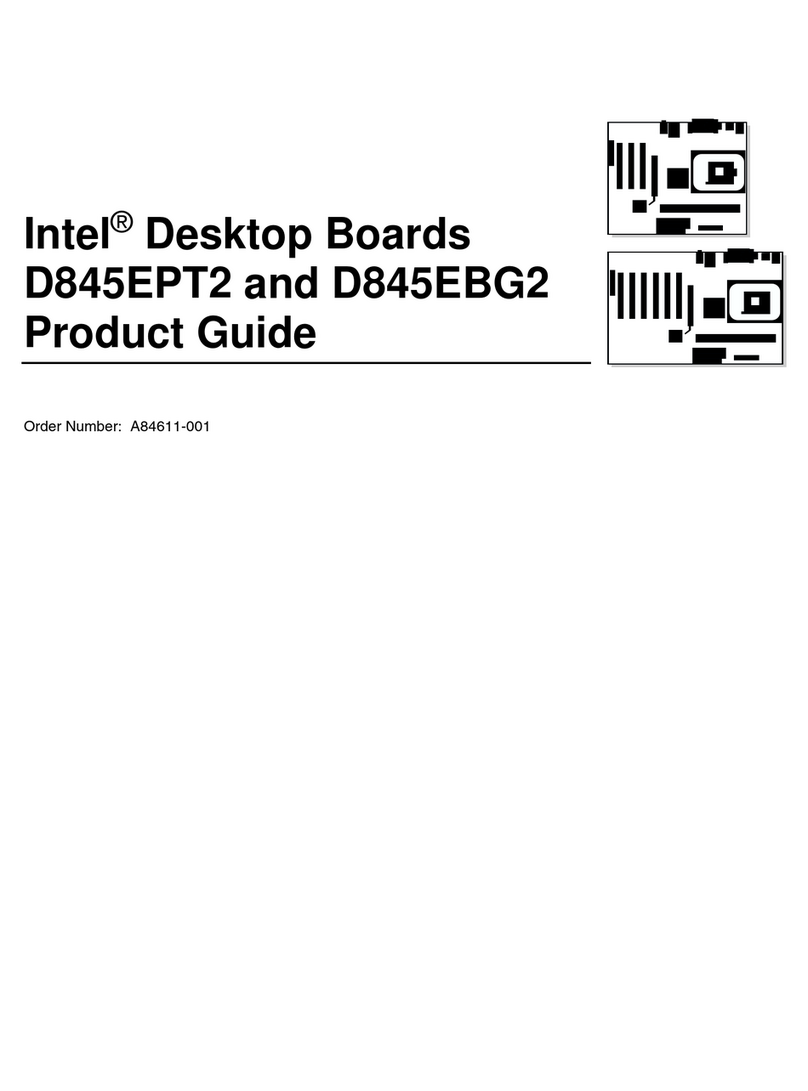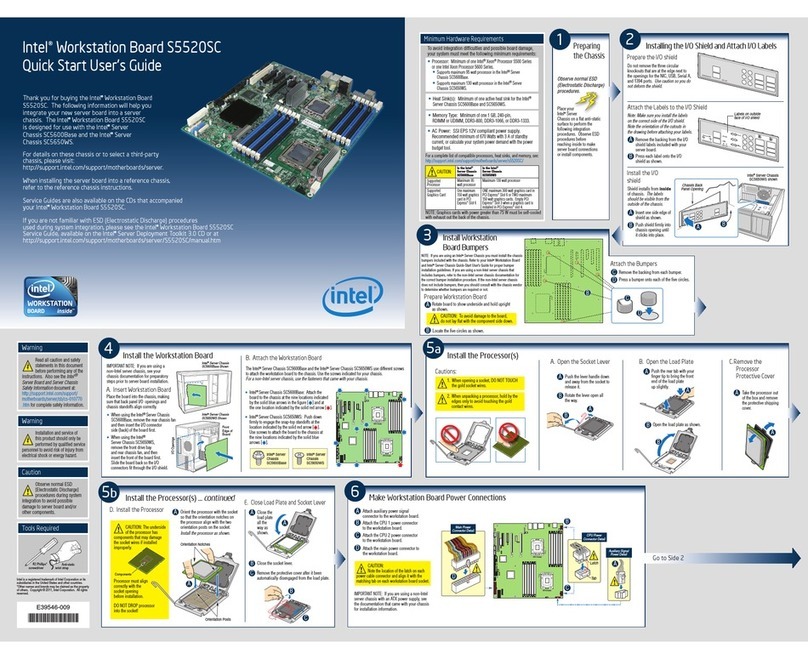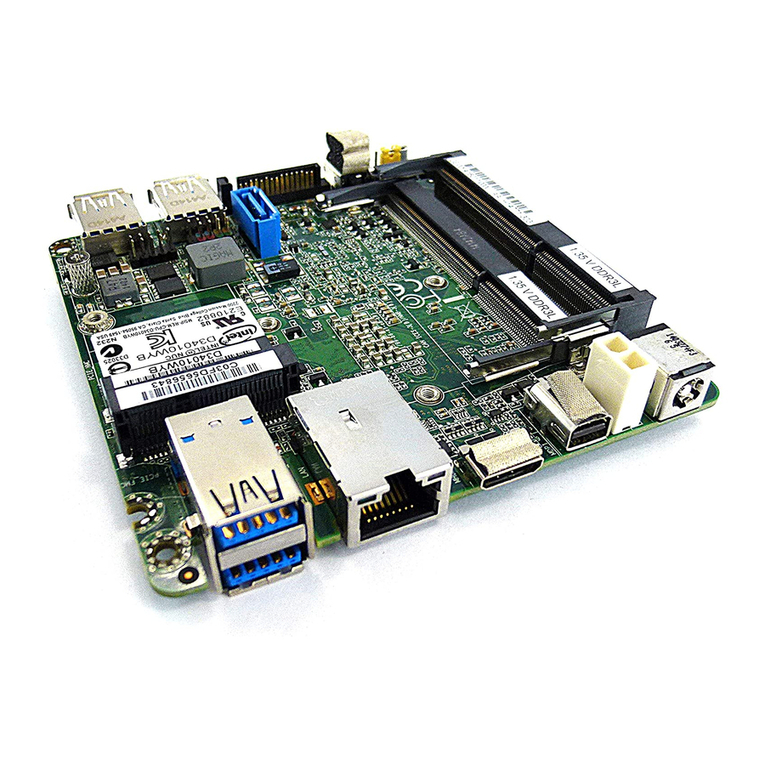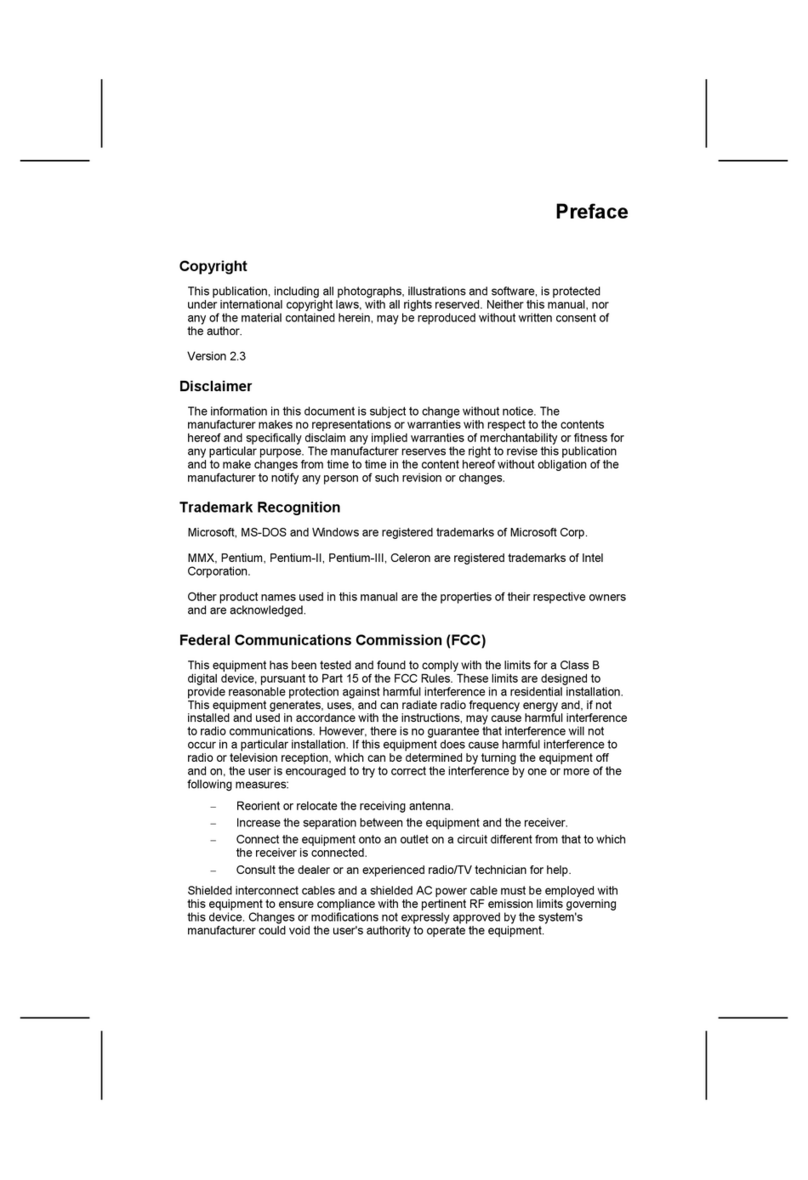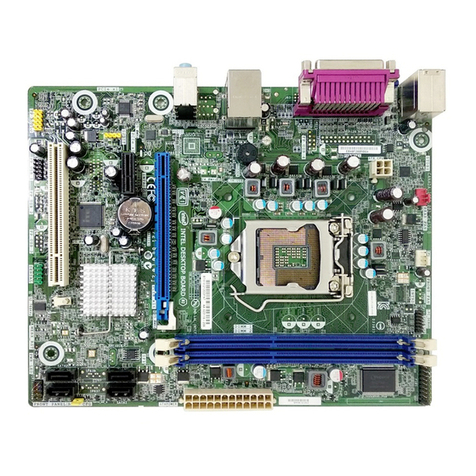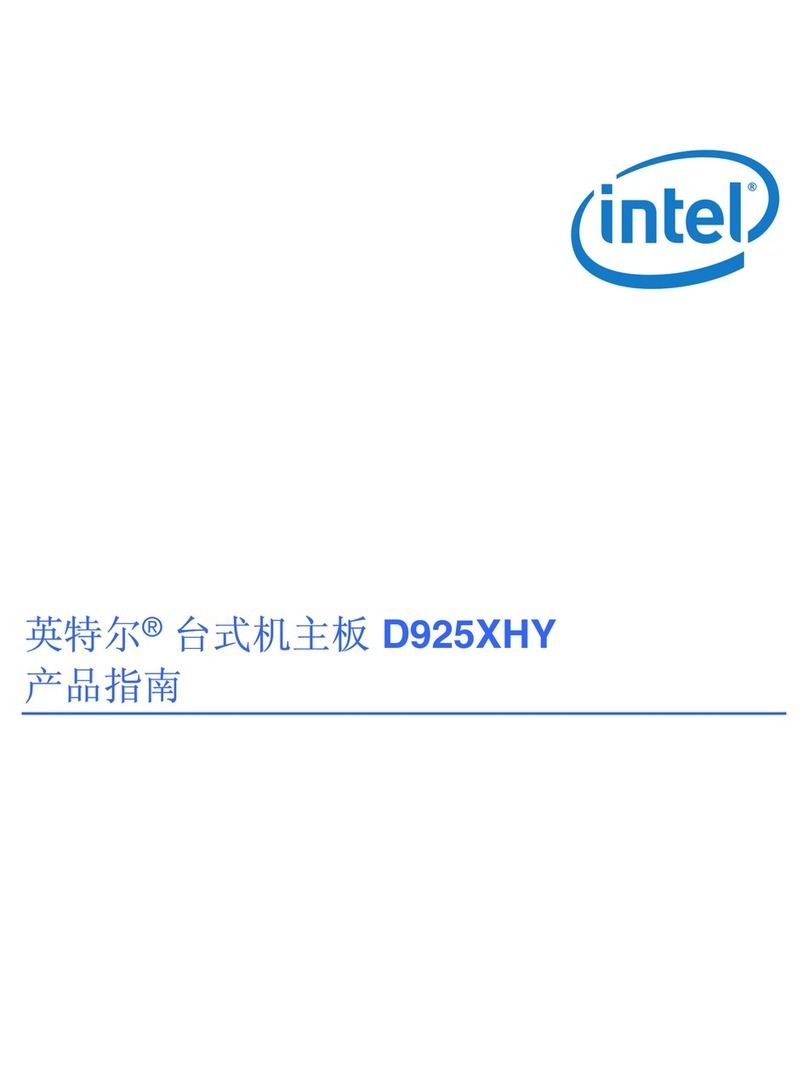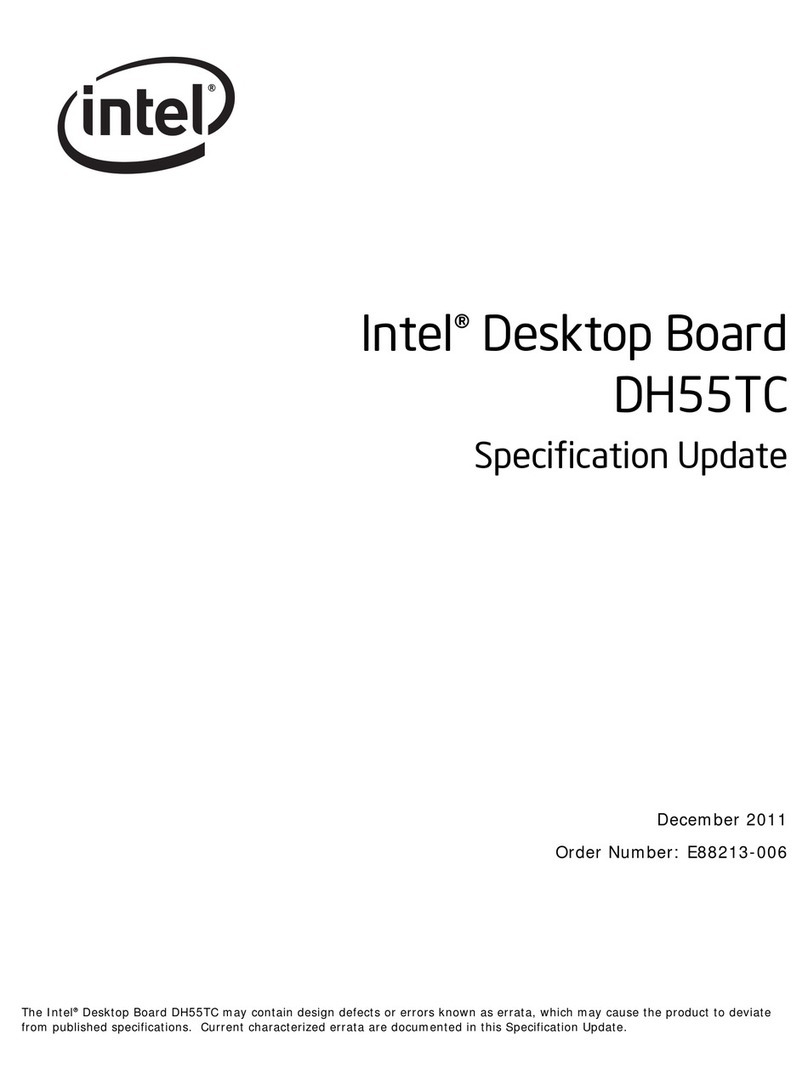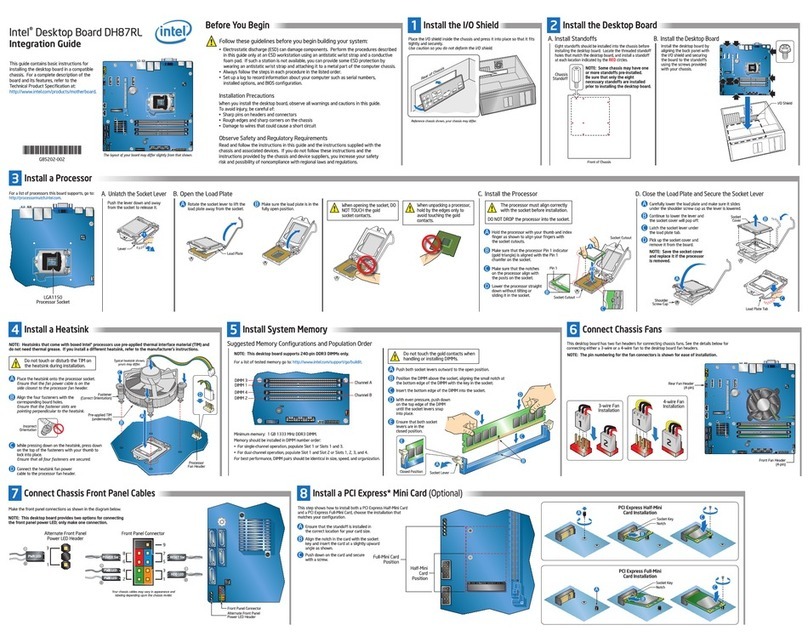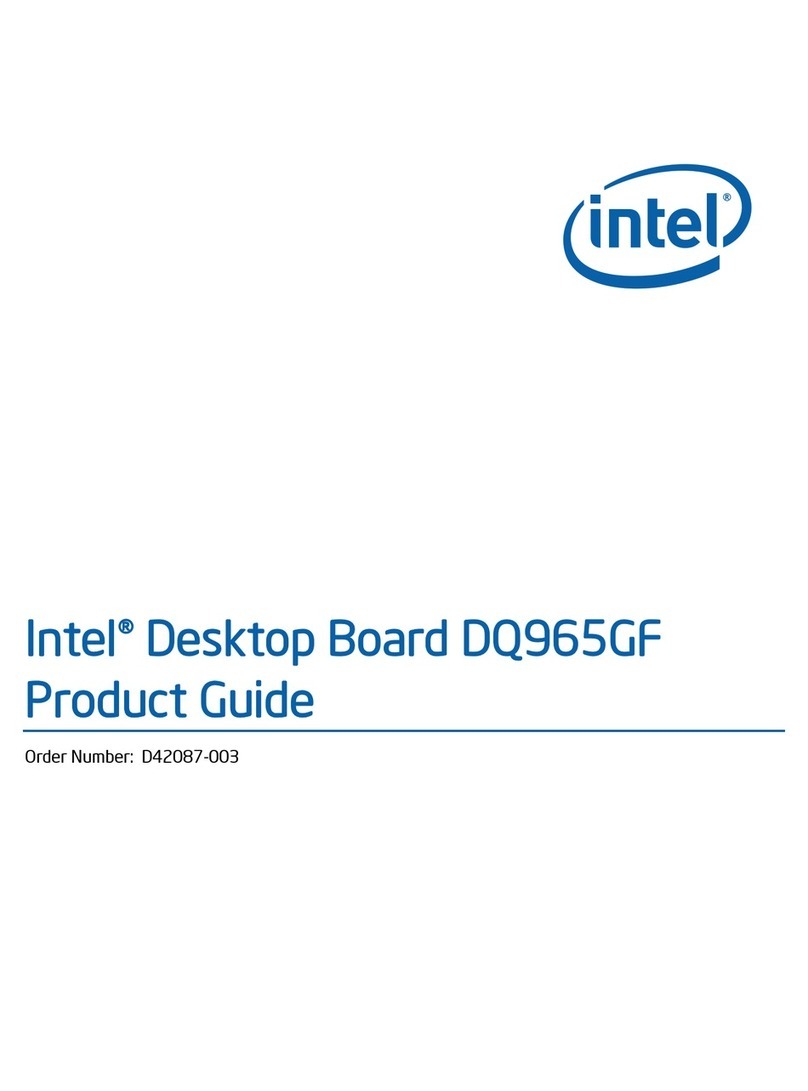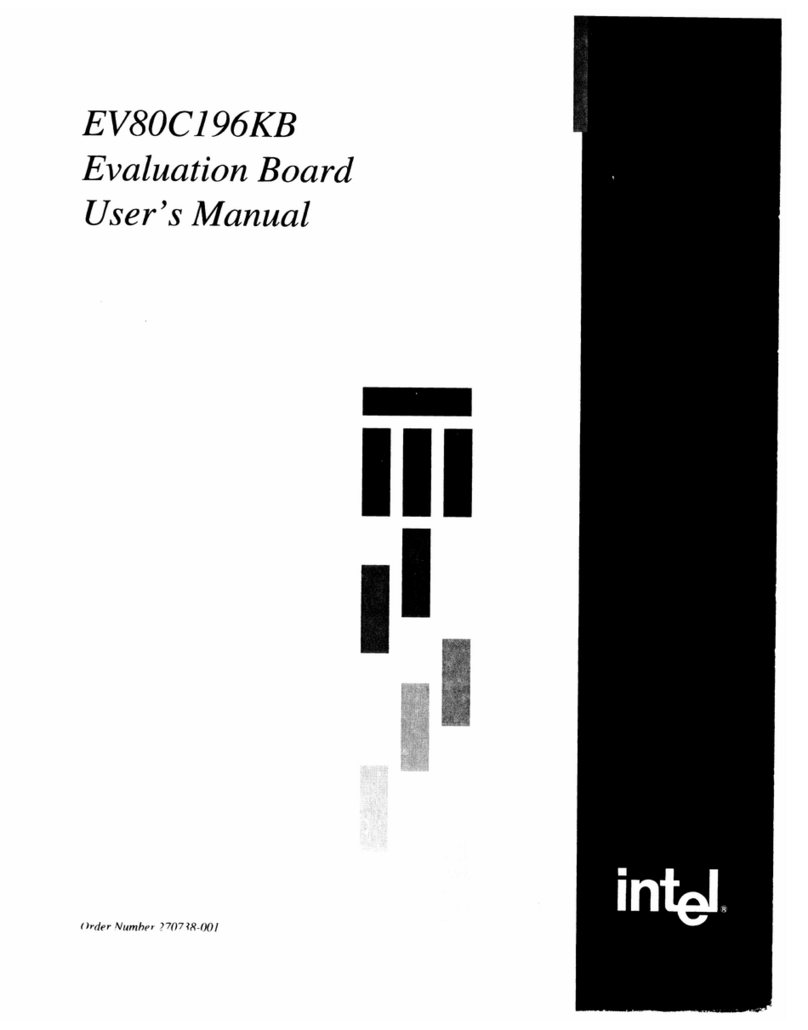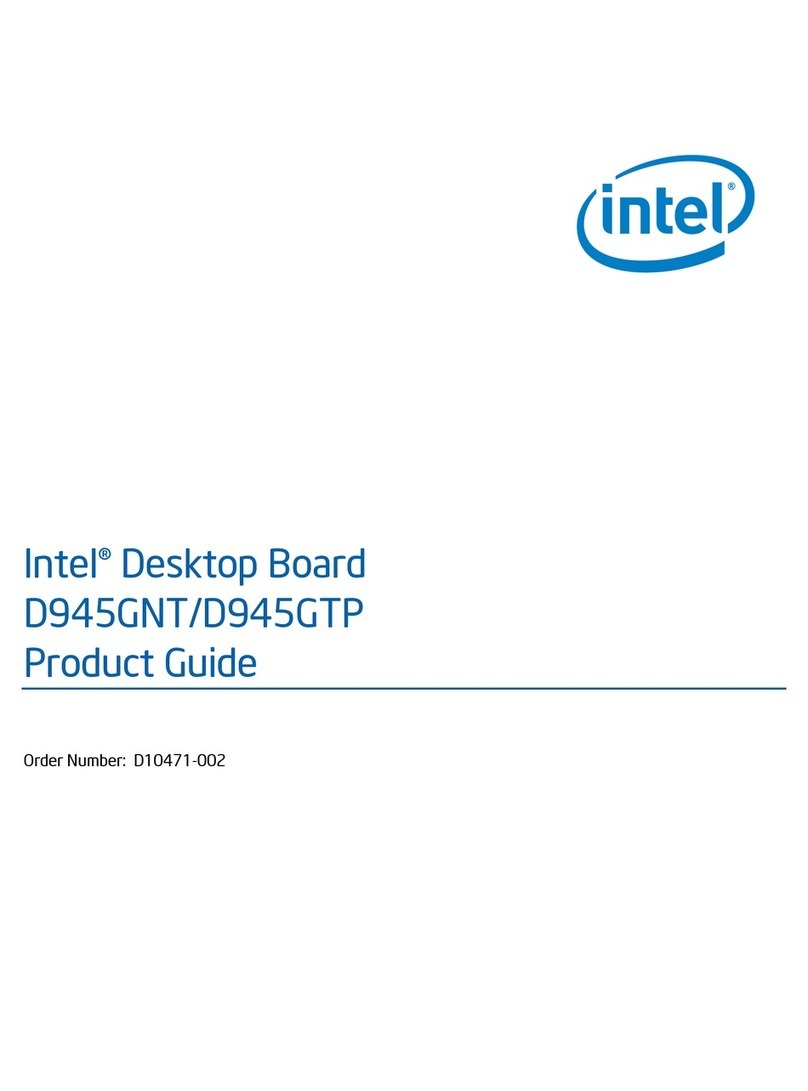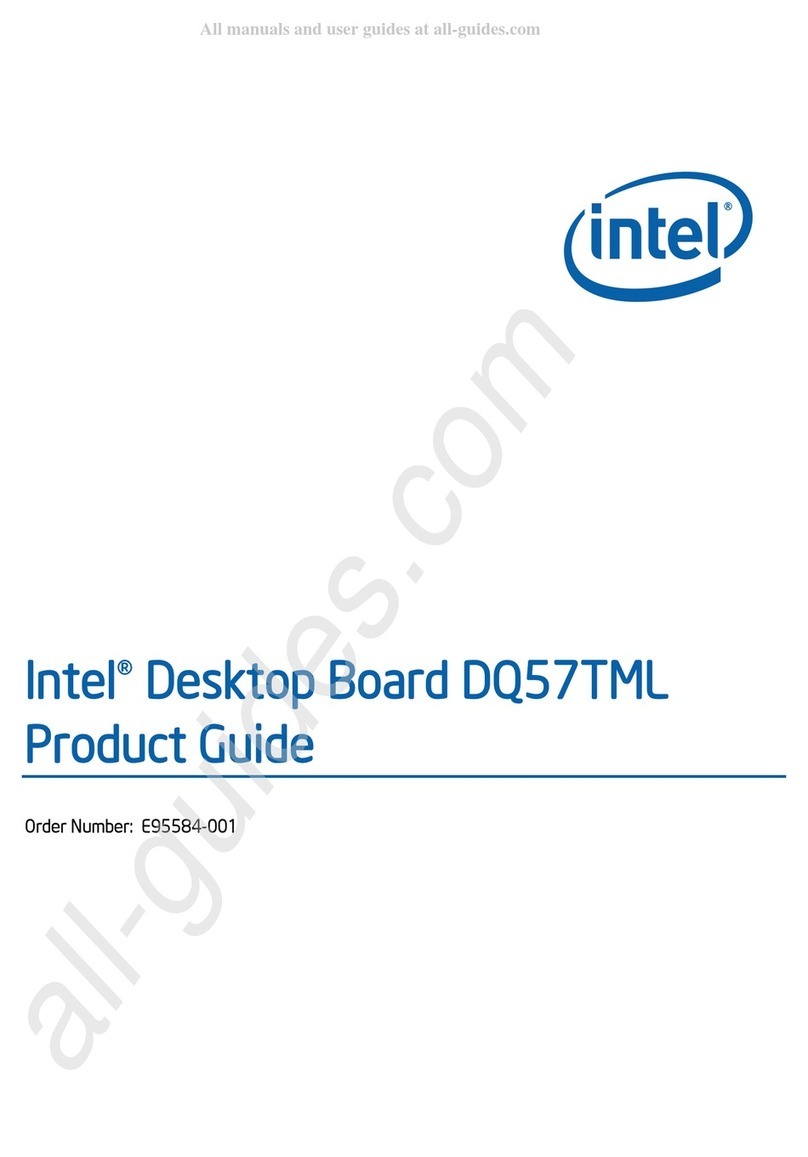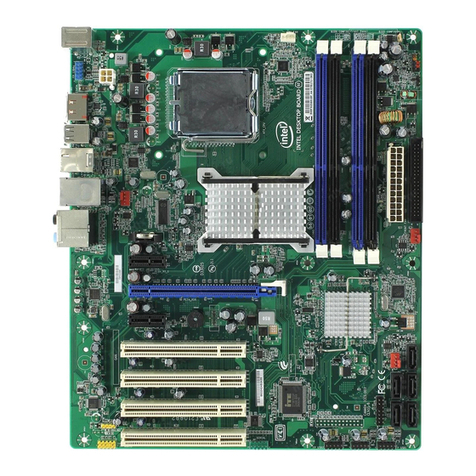
Intel Desktop Board DQ77MK Technical Product Specification
x
Tables
1. Feature Summary............................................................................. 13
2. Components Shown in Figure 1 .......................................................... 16
3. Supported Memory Configurations...................................................... 21
4. DVI Port Status Conditions................................................................. 25
5. DisplayPort Status Conditions............................................................. 25
6. Audio Formats Supported by the DisplayPort Interface.......................... 25
7. Audio Jack Support........................................................................... 29
8. LAN Connector LED States................................................................. 33
9. Intel ME “M” State LED Behavior ........................................................ 39
10. Effects of Pressing the Power Switch ................................................... 40
11. Power States and Targeted System Power........................................... 41
12. Wake-up Devices and Events ............................................................. 42
13. System Memory Map......................................................................... 49
14. Component-side Connectors and Headers Shown in Figure 11................ 52
15. Serial Port Connector ........................................................................ 53
16. Front Panel Audio Header for Intel HD Audio........................................ 53
17. Front Panel Audio Header for AC ’97 Audio........................................... 53
18. Front Panel USB 2.0 Connectors......................................................... 53
19. Front Panel USB 3.0 Connector........................................................... 54
20. IEEE 1394a Connector....................................................................... 54
21. Internal Mono Speaker Header........................................................... 54
22. PCI Express Full-/Half-Mini Card Connector.......................................... 55
23. SATA Connectors.............................................................................. 56
24. S/PDIF Header ................................................................................. 57
25. Chassis Intrusion Header................................................................... 57
26. Processor, Front, and Rear Chassis (4-Pin) Fan Headers....................... 57
27. LPC Debug Header............................................................................ 57
28. Processor Core Power Connector ........................................................ 59
29. Main Power Connector....................................................................... 59
30. Front Panel Header ........................................................................... 60
31. States for a One-Color Power LED....................................................... 61
32. States for a Two-Color Power LED....................................................... 61
33. Alternate Front Panel Power/Sleep LED Header..................................... 61
34. BIOS Setup Configuration Jumper Settings .......................................... 63
35. Intel MEBX Reset Header Signals........................................................ 64
36. Recommended Power Supply Current Values (High Power) .................... 66
37. Recommended Power Supply Current Values (Low Power)..................... 66
38. Fan Header Current Capability............................................................ 67
39. Thermal Considerations for Components.............................................. 69
40. Tcontrol Values for Components ......................................................... 69
41. Environmental Specifications.............................................................. 70
42. BIOS Setup Program Menu Bar........................................................... 72
43. BIOS Setup Program Function Keys .................................................... 72
44. Acceptable Drives/Media Types for BIOS Recovery................................ 75
45. Boot Device Menu Options................................................................. 76
